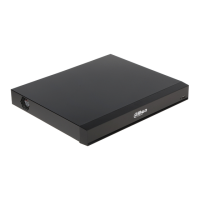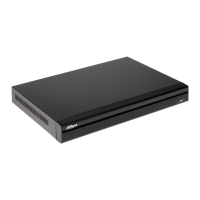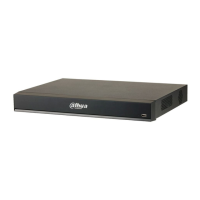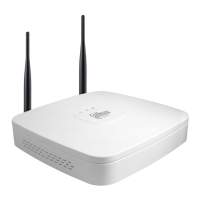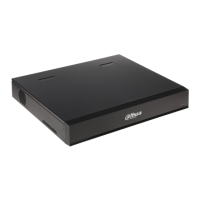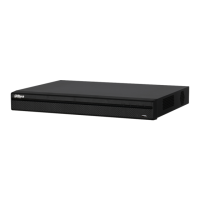Do you have a question about the Dahua nvr4208-8p and is the answer not in the manual?
| Operating System | Embedded LINUX |
|---|---|
| IP Camera Input | 8 channel |
| Two-way Talk | 1 channel Input, 1 channel Output, RCA |
| Interface | 1 HDMI, 1 VGA |
| OSD | Camera title, Time, Video loss, Camera lock, Motion detection, Recording |
| Record Interval | 1 ~ 120 min (default: 60 min), Pre-record: 1 ~ 30 sec, Post-record: 10 ~ 300 sec |
| Ethernet | 1 RJ-45 Port (10/100/1000Mbps) |
| Max. User Access | 128 users |
| Smart Phone | iPhone, iPad, Android |
| HDD Bays | 1 |
| Operating Temperature | -10°C ~ +55°C (+14°F ~ +131°F) |
| Main Processor | Dual-core embedded processor |
| Multi-screen Display | 1/4/9 |
| Video Detection and Alarm | Motion Detection, MD Zones: 396 (22 x 18), Video Loss, Camera Blank |
| Alarm input | 4 |
| Relay Output | 2 |
| Compression | H.265, H.264 |
| Recording Resolution | Up to 8MP |
| Record Mode | Manual, Schedule (Regular, Continuous), MD (Video detection: Motion Detection, Camera Blank, Video Loss) |
| PoE | 8 ports (IEEE802.3af/at) |
| Protocols | HTTP, TCP/IP, IPv4/IPv6, UPnP, RTSP, UDP, SMTP, NTP, DHCP, DNS, IP Filter, PPPoE, DDNS, FTP, Alarm Server, IP Search (Support Dahua IP camera, DVR, NVS, etc.) |
| USB Interface | 2 USB2.0 |
| Power Supply | AC 100~240V, 50/60 Hz |
| Power Consumption | NVR: <10W (without HDD), PoE: Max 25.5W for single port, 130W total |
| Operating Humidity | 10%~90% RH |
Step-by-step guide for installing the hard disk drive (HDD) into the NVR.
Covers the procedures for powering the NVR on and off safely.
Procedures for changing the administrator password and resetting it using security questions.
Configuring recording and snapshot settings, including encode, schedule, and event triggers.
Methods for searching and playing back recorded video files.
Procedures for backing up recorded files to USB devices or other storage.
Configuring network settings, including TCP/IP, WIFI, 3G, PPPoE, DDNS, UPnP, IP Filter, Email, FTP, SNMP, Multicast, Alarm Centre, Auto Register, P2P, and SWITCH.
Managing Hard Disk Drives, including formatting, status checks, and group setup.
Viewing live video feeds of connected channels, with options for digital zoom and local recording.
Procedures for searching, playing back, and downloading recorded video files.
Configuring alarm types, actions, and notification settings.
